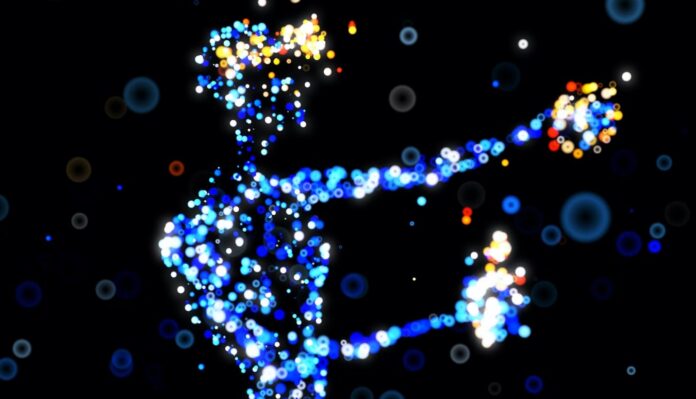The concept of a hologram has been around for decades. Science fiction series like Star Trek and Star Wars introduced the mythic technology to the masses in the 1970s and 80s. However, it wasn’t until the 2012 Coachella Music Festival that thousands found themselves face-to-face with an eerily realistic hologram of beloved rapper Tupac Shakur.
Media exploded with positive reactions. Though some spectators launched conspiracy theories based on how realistic the hologram was, many music fans and tech buffs were instead intrigued by the future of holography. After all, if the Tupac hologram was so well-received, what more could fans expect from the budding technology?

In reality, the path to create realistic and functional holograms has been rough. While the idea is simple, holography is complex. It’s a method of creating a 3D image, then storing that image to be re-constructed later. It involves multiple wavefronts, interference patterns, diffraction, and computer modeling.
As it stands now, holography is delayed like other technology such as VR. And, like VR once again, holography seems to be shifting toward a gaming focus. But what would a future of gaming with holograms look like? And why would gaming be the first industry to see functional holography applications?
Enhancing Graphics in Multiple Industries

Holography is pivoting toward gaming because of the industry’s emphasis on graphics. At the moment, mobile games are seeing a huge boom in terms of development by studios and activity by users. More people are using their mobile devices to game, whether on mega-popular titles like PUBG Mobile or new releases like Diablo Immortal.
In the realm of casino gaming, slots rely on dynamic visuals. In fact, gamers who regularly play slots online on sites such as Chumba Casino look for vibrant graphics when choosing a new slot, which is often as important as elements like theme and RTP. For example, the Hypernova slot has 10,000 ways to win, which makes it popular for players—but the game’s stunning celestial design is also a key part of the experience.
For mobile games and virtual casino titles, there’s one key element at play: the screen. The goal of holography in gaming would be to enhance visual engagement and design by projecting a hologram from a screen. This makes it easier to recreate a wavefront from a phone or computer screen—much more so than projecting a hologram onto a stage, as with Tupac in 2012.
Developing Alongside & In Contrast to VR
The goal of holography is very similar to the goal of VR: let spectators fully immerse themselves in another world. However, VR uses a head-mounted display to recreate strong visuals that give a sense of depth. Holography would, as mentioned above, rely on a screen.
The demands on developers are much more extreme with holography. In VR, designers use a single ‘base’ to create a 3D image. Holography, which actually lets a person walk around a projected image, requires designers to recreate the image from every angle. In other words, it’s not affordable or feasible for gaming studios to devote their resources to holography.
At least, not for now.
Thinking Big

While holography has a long way to go before gaming studios pivot toward projectable 3D images, some companies have started to make their intentions known. Unity, a development engine, is working with a design group called Infinite Z to integrate elements of holography into its suite. For now, this requires a special monitor equipped with infrared technology… and 3D glasses.
However, this early attempt from Unity and Infinite Z came back in 2012. Since then, Light Field Lab, based in Silicon Valley, has replaced Unity as the future of holography. Recently, Light Field released a 28-inch diagonal panel that contains 2.5 billion pixels, the amount necessary to recreate an image in a holographic form.
But Light Field isn’t sticking with small screens, which hints holographic mobile and browser-based gaming may be further delayed. Instead, their company is thinking big. Light Field plans to release a holographic video wall that could have up to 245 billion pixels.
A Long Time Coming
Though holography was touted in pop culture as the future of communication and entertainment technologies, the idea came from a physicist back in the 1940s. At the time, scientists were studying particles and waves in relation to lasers. While most might think of a laser as a concentrated light, it’s actually a process that involves electromagnetic radiation.
Holography is based on the usage of lasers. Physicist Dennis Gabor first published a theory on holography in 1947, which won him a Nobel Prize. But Gabor’s theory would see fruition under two new scientists: Emmeth Leith and Juris Upatnieks.
The pair used laser lighting to create the world’s first hologram. So, almost seventy years later, what has delayed the development of accessible lasers? Especially considering holography was invented around the time of the computer.
A 5G Future for Holography

So far, we’ve covered the challenges and goals of gaming-centric holography. For holography to find its place in the gaming sector, it must first be applicable to console and especially mobile devices. While companies like Unity and Light Field are devoting resources to developing holography solutions for entertainment, one of the biggest developments is the 5G mobile network.
Holography, as stated above, relies on lasers to recreate an image from each angle, then project that image into 3D space. To do this, a mobile device would have to send vast amounts of data. Until recently, this type of image playback wasn’t possible for wireless networks. That meant holography could only be performed by complex machinery.
This is likely to change in the coming years as mobile technology benefits from networks with higher speeds. It also creates the possibility for live holograms that are responding in real-time. Its applications in gaming are varied, including real-time strategy titles from Age of Empires to RPGs like Total War.
Viewed as a real-time graphic transmission, holography could also become relevant to sites like Twitch. In fact, the platform might be the first stop for holography, which is likely to see applications in communication before gaming.









